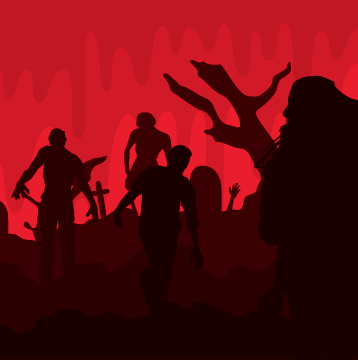As a horror movie buff, I’ll watch any spooky flick from the trashy ones that get a negative ten percent on Rotten Tomatoes to the decent and critically-acclaimed. However, one thing I noticed as Netflix is releasing a lot of new horror movies is the lack of black people in some of these films, particularly “serious” supernatural or possession-oriented horror films.
Now, I’m not talking about films like “Get Out,” which I hear is a great movie, and is grounded more in reality. I’m talking about the horror movies of our modern era: found footage, spooky plots with themes of technology or social media embedded, standard ghosts-or-demons-killing-everyone — those ones.
There are “The Haunting of Molly Hartley,” “Friend Request,” “Malevolent” — all led by white females who get terrorized by spirits or demons that want to nibble their souls or ruin their lives for XYZ reason (or at least that’s the premise for most of them). This isn’t a bad thing at all, but why can we not have more African–Americans getting their bodies hijacked or their minds twisted? Most horror movies featuring African–American actors and actresses involve the “token black character,” where a black actor or actress is exploited as the comedic relief and generally dies first.
I found three films that could’ve hit the mark: “As Above, So Below” (2014), “The Final Project” (2016), and “A House Is Not a Home” (2016).
In “As Above, So Below,” we have an African–American male, Benji, featured but he is behind the camera for the first half of the movie and he gets hurt the most out of the entire group. At least he didn’t die first. This was an alright movie, but for a person who is around for most of the movie, we barely knew anything about him up until he (spoiler) dies. He just occasionally functions as the guy who “wants to get the heffalump out of this haunted place.”
“Final Project” has three African–Americans in a group of seven going to an abandoned Louisiana mansion to be ghost hunters. It followed the typical found footage formula, and from what I read from reviews, was less than mediocre unfortunately. “A House Is Not a Home” had more of that low-budget movie feel and wasn’t that great either, but it had a majority cast of African–Americans and some notable actors and actresses.
George Cochran, an adjunct professor and retiring film director, offered some insight about the business and marketing behind horror movies. He said most of the decisions are made in the concept and business stages of these film projects before casting is decided.
“How do we put together the right set of circumstances, formula, that will be on the screen that can draw as many people as we can, and make as much money as we can?” Cochran said.
Cochran hypothesized that people of color may not be attracted to these type of films. Nielsen, global measurement and data analytics company on consumers and media markets, conducted a couple studies on horror movie audience demographics in 2014 and 2015.
In 2014, “Buyers of horror titles tend to be females age 12 to 24 and males 18 to 24 who live in an upper- and lower-class lifestyle segments heavily populated with young singles and divorced retirees. Digital buyers skew heavily toward females age 18 to 24, but also include females age 25 to 34. Additionally, Hispanics are more likely than the general population to purchase the physical disc than stream horror titles,” according to Nielsen.
They also noted that African-Americans are more likely to make it a family affair than Caucasians or Hispanics. Since Nielsen did not provide any statistics about racial delineations, it’s hard to how much black people take up the horror market from a consumer standpoint.
However, Nielsen reported in 2015 that “horror fans are 23 percent more likely to be Hispanic than the average consumer and 15 percent more likely to be African-American.”
“There’s always a market. It’s all about defining the market… and it wants to draw as much out of its demographic as possible. It’s about who you’re going to bring out, who is going to sit in those seats and then you make the movie,” Cochran said.
I agree with him there. It’s possible that the African American demographic (and even Hispanic) is not being tapped enough for American horror films. “Black Panther” showed the money making potential of the black community when you have enough representation; but to be fair, the vast majority of main cast of Black Panther was black with two white characters. So, it’s hard to say if a mixed bag of cast can attract a strong showing.
There are amazing black horror movies out there, such as “Tales from the Hood” and (especially) “Candyman” but it seems like African–Americans are falling to the wayside again in the resurgence of horror intrigue initiated by titles like “It” and “The Conjuring” franchise. Let’s hope that “Get Out” sparks some interest in some moviemakers’ hearts.




